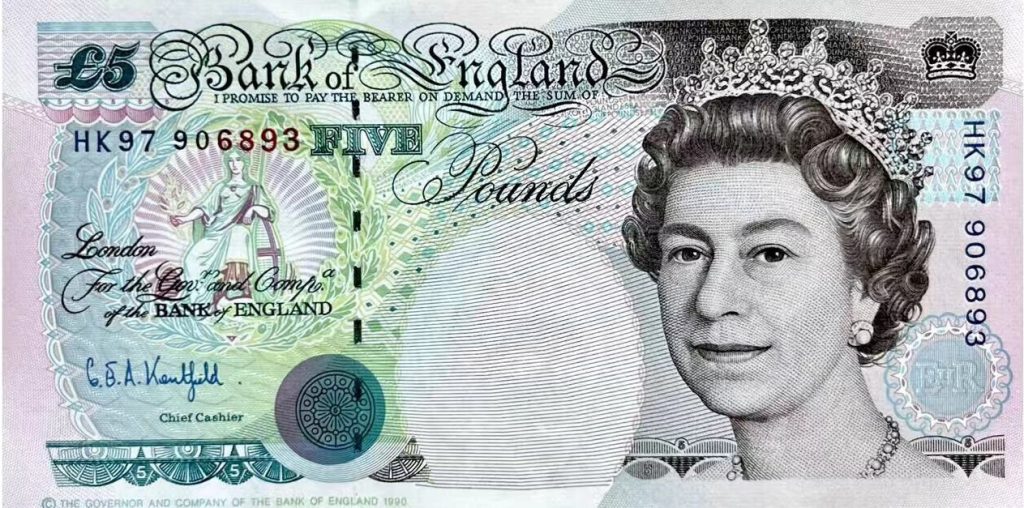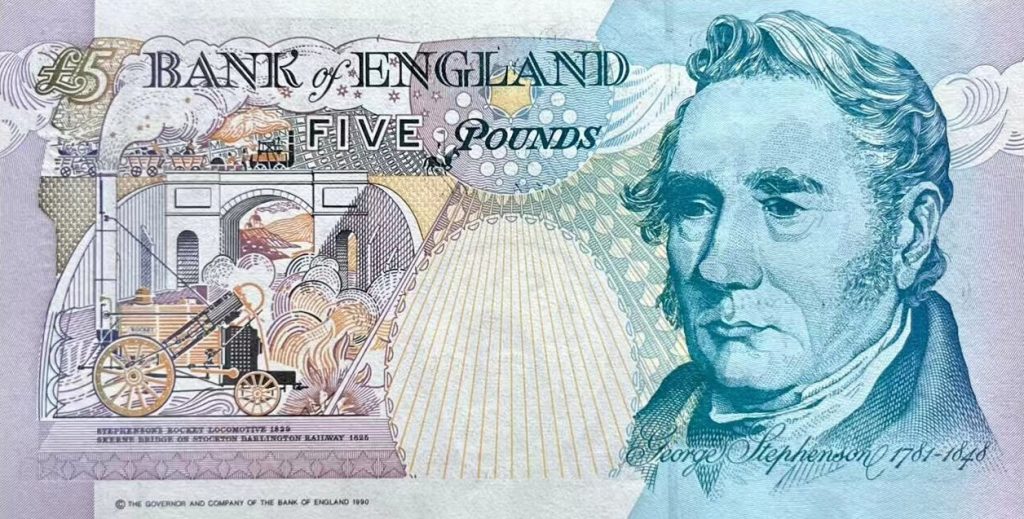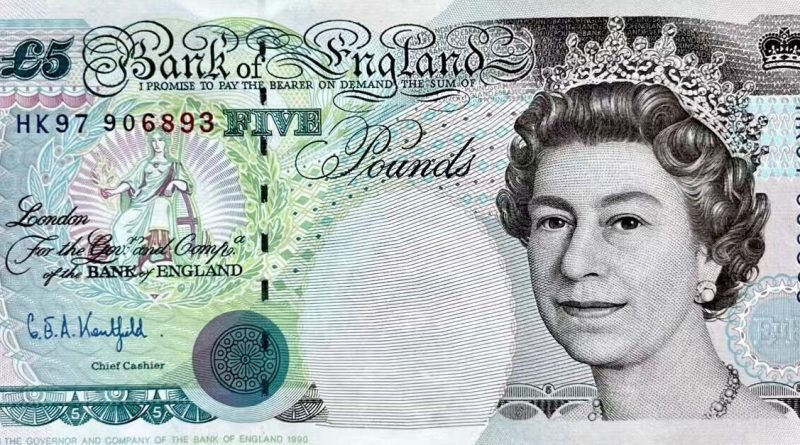The Bank of England £5 banknote with the HK97 prefix
The Bank of England £5 banknote with the HK97 prefix was issued to commemorate the return of Hong Kong to China on July 1, 1997. This historic event marked the end of British colonial rule in Hong Kong, which lasted 156 years, and the start of the “One Country, Two Systems” framework under Chinese sovereignty.
The HK97 serial prefix was specially assigned to represent “Hong Kong 1997,” making this note a limited-edition commemorative issue. While the design remained largely similar to standard £5 banknotes of the era, its special serial number makes it a highly collectible piece among numismatists.

Overview of the Front and Back Note
The obverse (front) side features a portrait of Queen Elizabeth II, as was customary on all Bank of England banknotes at the time. The Queen is shown wearing the George IV State Diadem, symbolizing her authority and Britain’s constitutional monarchy. The note’s denomination (“Five Pounds”) is displayed prominently.
The reverse (back) side honors George Stephenson (1781–1848), the “Father of the Railways”, and includes an illustration of Stephenson’s Rocket, a famous early steam locomotive. This reflects Britain’s industrial and engineering achievements, aligning with the country’s legacy of innovation.
Design Features
Obverse (Front)
- Portrait of Queen Elizabeth II – Featuring the monarch in formal attire with the George IV State Diadem.
- Denomination (“Five Pounds”) – Clearly printed in large letters.
- HK97 Serial Prefix – This unique “HK97” prefix signifies Hong Kong’s handover to China in 1997, making the note a special commemorative issue.
- Chief Cashier’s Signature – Signed by C.B.A. Vennettill, confirming its issuance by the Bank of England.
- Decorative Background Elements – Including floral patterns and traditional British motifs.
Reverse (Back)
- Portrait of George Stephenson – Honoring the pioneer of railway engineering.
- Illustration of “Stephenson’s Rocket” (1829) – Depicting the early steam locomotive, which played a crucial role in Britain’s railway expansion.
- Denomination (“Five Pounds”) – Displayed in both numerical and text form.
- Fine Line Engraving Patterns – Enhancing the artistic and security elements of the note.

Color Scheme
- The front side of the note features a mix of blue, gray, and green shades, creating a sophisticated yet formal appearance.
- The back side maintains a soft blue and yellow color palette, highlighting George Stephenson’s legacy.
These colors were chosen to reflect British elegance while ensuring the banknote remained visually distinct and recognizable.
Dimensions
- Width: 135 mm
- Length: 70 mm
This follows the standard size for Bank of England £5 notes issued in the 1990s, making it consistent with other denominations of the era.
Security Features
The 1997 “HK97 Prefix Commemorative Hong Kong Return to China” £5 Banknote contains several security features to prevent counterfeiting:
- Watermark – A hidden portrait of Queen Elizabeth II, visible when held up to the light.
- Metallic Thread – A thin security thread embedded within the paper, running vertically.
- Microprinting – Tiny text that can only be seen under magnification, adding an extra layer of security.
- Raised Printing – Certain areas, like the denomination and Queen’s portrait, have a tactile texture.
- Color Variations – Different shades of blue and green ink used to make counterfeiting more difficult.
- UV Features – Special fluorescent elements that glow under ultraviolet light, helping banks and financial institutions verify authenticity.
These security elements were standard on Bank of England notes at the time, ensuring the note’s authenticity and durability.
Circulation and Collectibility
- This £5 banknote was a standard issue from the Bank of England, but the HK97 prefix makes it a rare commemorative piece.
- Issued in 1997, the note was meant to mark the historic transfer of Hong Kong back to China after more than a century of British rule.
- The HK97 serial number makes it highly desirable among collectors, as only a limited number of these notes were produced.
- Many of these banknotes have since been retired from circulation, increasing their value and demand in the numismatic market.
- In pristine, uncirculated condition, these notes can fetch significantly higher prices than their face value, especially among British and Hong Kong collectors.


